- europages
- >
- COMPANIES - SUPPLIERS - SERVICE PROVIDERS
- >
- organic
Results for
Organic - Import export

AGRANA STARCH
Austria
- Native Starches - Pregelatinized Starches - Modified Pregelatinized Starches - Wheat Gluten - Egg Replacement - Modified Cook-up Starches - Dried Starch Saccharification Products - Infant Formular & Baby Food - Liquid Sweetener Starch Products - Potato Products for the Food Industry
Request for a quote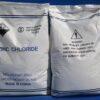
OEN CHEMICALS GMBH
Austria
Zinc Chloride 98% is a very useful chemical compound having the chemical formula ZnCl2. Chemical Appearance Zinc Chloride 98% has the appearance of a white or colorless crystalline solid. It is hygroscopic and very deliquescent. It is odourless. It is highly soluble in water. Chemical Applications and Strengths Zinc Chloride 98% is an extremely efficient chemical compound and therefore, has many industrial applications. Its main applications and strengths are: Zinc Chloride 98% is most popularly used in the battery industry. It is used as a metallurgical flux. It reacts with metal oxides and gives derivatives of the idealised formula MZnOCl2. This reaction uses zinc chloride solution as a flux for soldering. It is used in organic synthesis. It is a very useful Lewis acid in organic chemistry. It is used as a catalyser for catalysing the conversion of methanol to hexamethylbenzene.
Request for a quote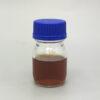
OEN CHEMICALS GMBH
Austria
Chemical appearance Sodium Thioglycolate or Sodium Mercaptoacetate has a light yellowish and sometimes dark color. It comes in a liquid form with a strong pungent odour and has a pH level between 7 to 11. Chemical application and strength Sodium Thioglycolate or Sodium Mercaptoacetate is a mining separator which is used mainly in the separation process of copper and molybdenum copper sulfide. It also acts as a galena inhibitor. It is also known as a powerful and effective depressant agent for copper sulfide which has gone through the separation process during considerable environment conditions. Great results are seen when this is used as a depressant instead of using sodium cyanide or sodium sulfide. Has the ability to enhance the recovery rate of various precious materials and metals during flotation. Should be kept in an environment free of water and moisture. Should also kept far away from fire or high temperatures.
Request for a quote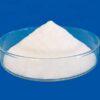
OEN CHEMICALS GMBH
Austria
Chemical appearance: The appearance of Sodium metabisulfite is either in the form of white crystals or as a powdered solid with a slight odor of sulfur. Inhalation could lead to toxic results and can cause serious damages to skin and tissue. Sodium metabisulfite is clearly soluble in water and forms a clear and colorless solution. Chemical application and strengths: The primary applications of Sodium metabisulfite are evident in the mining industry. It is used for controlling the depression of pyrites and sphalerite minerals. MBS is ideal for pH control for the froth flotation process, where it could control pyrite depression. Sodium Metabisulfite is also helpful in preventing flotation of sphalerite through copper activation with the availability of Tennantite/Covellite in the ore. In the case of pyrite flotation, the maximum iron/pyrite depression with the use of Sodium Metabisulfite is possible somewhere around the pH of 6.
Request for a quote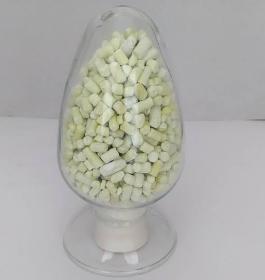
OEN CHEMICALS GMBH
Austria
Chemical appearance: Sodium Isopropyl Xanthate (SIPX) is available in the solid powder form or in the shape of pellets. SIPX has the appearance of white to yellowish deliquescent solid in the powder form. The color of the SIPX pellets varies from yellow to green. In the solid powder form, SIPX emits a slightly pungent odour. In the pellet form, SIPX emits a sulphur like odour. Chemical application and strengths: The strength of SIPX for collection is slightly higher than that of ethyl xanthate. Therefore, it serves as the perfect tool for the flotation of nonferrous metallic sulfide minerals in the form of a collector. Xanthates have been known for being an integral part of sulfide mineral flotation. SIPX is actually a salt that contains a non-polar hydrocarbon group that helps in the hydrophobic nature of sulfide material, thereby pointing out from the mineral to the solution. The salt also contains a polar group that adsorbs onto the sulfide mineral surface.
Request for a quoteDo you sell or make similar products?
Sign up to europages and have your products listed
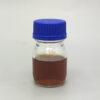
OEN CHEMICALS GMBH
Austria
Chemical appearance Sodium Thioglycolate or Sodium Mercaptoacetate has a light yellowish and sometimes dark color. It comes in a liquid form with a strong pungent odour and has a pH level between 7 to 11. Chemical application and strength Sodium Thioglycolate or Sodium Mercaptoacetate is a mining separator which is used mainly in the separation process of copper and molybdenum copper sulfide. It also acts as a galena inhibitor. It is also known as a powerful and effective depressant agent for copper sulfide which has gone through the separation process during considerable environment conditions. Great results are seen when this is used as a depressant instead of using sodium cyanide or sodium sulfide. Has the ability to enhance the recovery rate of various precious materials and metals during flotation. Should be kept in an environment free of water and moisture. Should also kept far away from fire or high temperatures. It is composed of carboxylic acid and thiol (mercaptan)
Request for a quote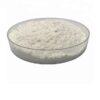
OEN CHEMICALS GMBH
Austria
Thiourea 99% is a very useful organic sulphur containing compound having the chemical formula N2H4CS. It refers to a broad class of compounds related to thioamides. Chemical Appearance Thiourea 99% has the appearance of a white solid. It is most often seen as a white powder. It is soluble in water. It has a bitter taste Chemical Applications and Strengths Thiourea 99% is an extremely efficient chemical compound and therefore, has many industrial applications. Its main applications and strengths are: Thiourea 99% is most popularly used as a thiox precursor. It is used as a precursor to Thiourea dioxide and this is a widely used reducing agent in textile processing. It is used as a flotation reagent for metal minerals. It is used as a corrosion inhibitor for metals. Thiourea is commonly used as a fertiliser. It has many desirable properties as a fertiliser specifically under the conditions of environmental stress.
Request for a quote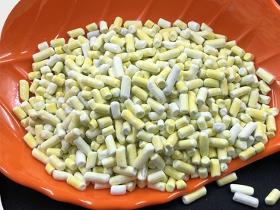
OEN CHEMICALS GMBH
Austria
Chemical appearance: Potassium Amyl Xanthate (PAX) is available in the form of yellowish or pale-grey crystals or in the form of free-flowing powder in the purest state. PAX is also available in the form of a solution. PAX is highly water-soluble and emits a slightly unpleasant odor that is similar to that of carbon disulfide or that of decaying cabbage. Another property of PAX is the absorption of moisture from air i.e., hygroscopic nature. Chemical application and strengths: The properties of PAX as a Xanthate make it the ideal collector for various nonferrous metallic ores. Potassium Amyl Xanthate is the perfect choice for flotation processes of nonferrous metallic ores as a strong yet non-selective collector. PAX works effectively as a flotation reagent in the flotation of oxide minerals such as oxidized sulfide
Request for a quote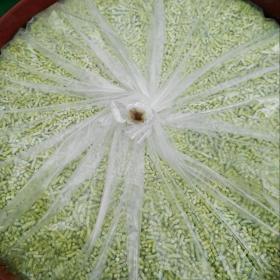
OEN CHEMICALS GMBH
Austria
Potassium Butyl Xanthate is a reagent that plays a pivotal role in modern mining and metallurgy. Flotation Process Facilitator: Potassium Butyl Xanthate is an indispensable ally in the flotation process, a cornerstone of mineral extraction. Flotation involves separating desired minerals from their ores. Selective Adhesion: When introduced to a slurry of finely ground ore and water, Potassium Butyl Xanthate selectively adheres to sulfide minerals present in the mixture. These minerals, often hosting valuable elements like copper or lead, exhibit a unique affinity for the xanthate. Bubble Attachment: Air bubbles are introduced into the slurry. The hydrophobic mineral surfaces coated with Potassium Butyl Xanthate collectors readily attach to the bubbles, effectively making them float to the surface. Rising to the Top: The mineral-laden bubbles rise to the surface of the flotation cell, forming a froth layer.
Request for a quote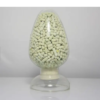
OEN CHEMICALS GMBH
Austria
Potassium Butyl Xanthate is a reagent that plays a pivotal role in modern mining and metallurgy. Flotation Process Facilitator: Potassium Butyl Xanthate is an indispensable ally in the flotation process, a cornerstone of mineral extraction. Flotation involves separating desired minerals from their ores. Selective Adhesion: When introduced to a slurry of finely ground ore and water, Potassium Butyl Xanthate selectively adheres to sulfide minerals present in the mixture. These minerals, often hosting valuable elements like copper or lead, exhibit a unique affinity for the xanthate. Bubble Attachment: Air bubbles are introduced into the slurry. The hydrophobic mineral surfaces coated with Potassium Butyl Xanthate collectors readily attach to the bubbles, effectively making them float to the surface. Rising to the Top: The mineral-laden bubbles rise to the surface of the flotation cell, forming a froth layer.
Request for a quote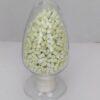
OEN CHEMICALS GMBH
Austria
Chemical Appearance Sodium Amyl Xanthate (SAX) is a sightly yellow or grey yellow powder or pellet. It is soluble in water and decomposes easily in the presence of acid and heat. It has a very pungent odour. Chemical Applications and Strengths Sodium Amyl Xanthate (SAX) is an extremely efficient chemical compound and therefore, has many industrial applications. It is most widely used as a very strong collector in the mining industry. Its main applications and strengths are: It is used as a collector in the mining industry. Collectors are chemicals that selectively attach to the surface of the mineral, making the mineral hydrophobic. Hydrophobicity is necessary for air bubble attachment in the precious metal extraction processes. Sodium Amyl Xanthate is the most powerful collector among the xanthates. It is extensively used in the flotation process of sulfide ores.
Request for a quote
OEN CHEMICALS GMBH
Austria
Chemical appearance: Sodium ethyl xanthate or SEX is typically a yellowish powder or pellet that is soluble in water. It is a xanthate based on the C2 alkyl ethyl alcohol in the sodium salt form. Chemical application and strengths: Sodium ethyl xanthate or SEX is used in mining as a flotation agent. It is used as a collector and xanthate used especially in copper mines. It can be used for flotation of various minerals that are activated or hydrophobic and float easily such as lead, cobalt, zinc and nickel. It can form insoluble compounds with these metallic ions. Sodium ethyl xanthate is especially important in in froth flotation, where it is used to separate hydrophobic materials from hydrophilic. In mining this is an important operation to recover sulfide ores. For ores such as copper, this process lowers the costs of recovering low grade ores and can save mining companies processing costs.
Request for a quote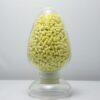
OEN CHEMICALS GMBH
Austria
Chemical appearance: Sodium Isobutyl Xanthate (SIBX) is available in the form of pale-yellow crystals or powdered form in the pure state. It is also available in the form of a solution. In the solid form, SIBX absorbs moisture from the air, and so, it is known as a hygroscopic substance. SIBX emits the odor of carbon disulfide that is somewhat the same as that of decaying cabbage. In some cases, SIBX can emit a very faint unpleasant, or sulfurousodor. SIBX is readily soluble in water and could form insoluble compounds with different metallic ions. The uses of Sodium Isobutyl Xanthate (SIBX) as a collector are widely known. It is a credible flotation reagent for different nonferrous metallic sulfide ores. It is primarily implemented for the flotation of copper, lead, zinc sulfide ores as well as the sulfide ores of other precious metals.
Request for a quote
OEN CHEMICALS GMBH
Austria
Chemical appearance: Sodium Isopropyl Xanthate (SIPX) is available in the solid powder form or in the shape of pellets. SIPX has the appearance of white to yellowish deliquescent solid in the powder form. The color of the SIPX pellets varies from yellow to green. In the solid powder form, SIPX emits a slightly pungent odour. In the pellet form, SIPX emits a sulphur like odour. Chemical application and strengths: The strength of SIPX for collection is slightly higher than that of ethyl xanthate. Therefore, it serves as the perfect tool for the flotation of nonferrous metallic sulfide minerals in the form of a collector. Xanthates have been known for being an integral part of sulfide mineral flotation. SIPX is actually a salt that contains a non-polar hydrocarbon group that helps in the hydrophobic nature of sulfide material, thereby pointing out from the mineral to the solution. The salt also contains a polar group that adsorbs onto the sulfide mineral surface.
Request for a quoteResults for
Organic - Import exportNumber of results
15 ProductsCompany type